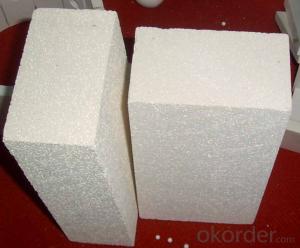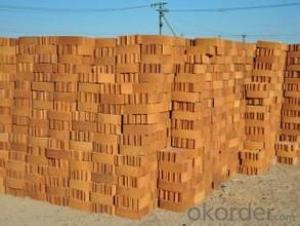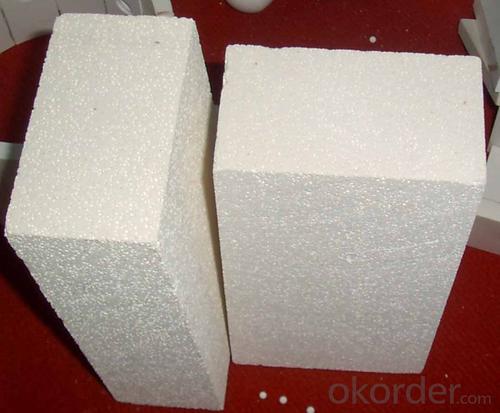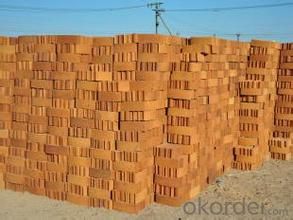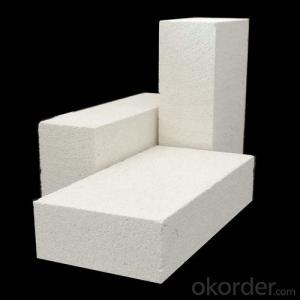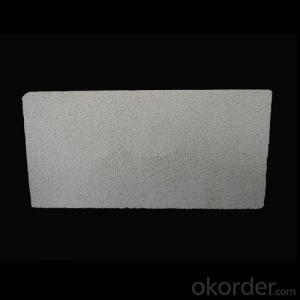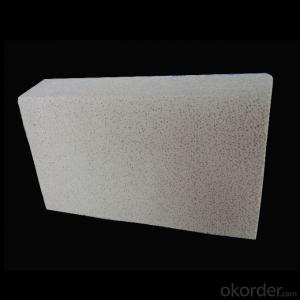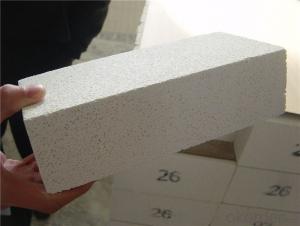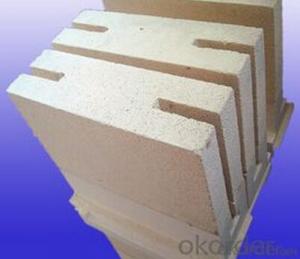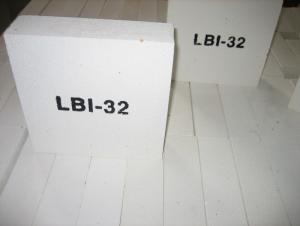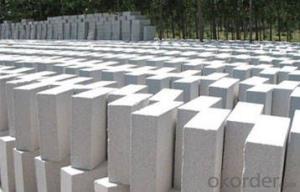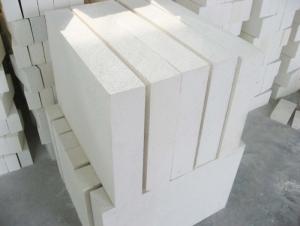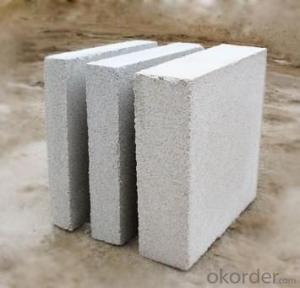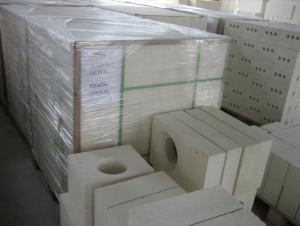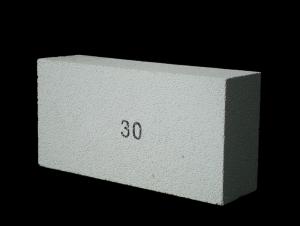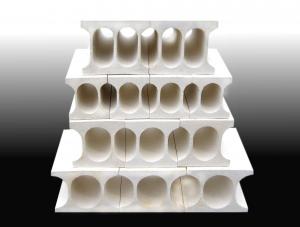Insulating Fire Brick - Refractory GJM Mullite Insulation Brick GJM-30
- Loading Port:
- Shanghai
- Payment Terms:
- TT OR LC
- Min Order Qty:
- 10 m.t.
- Supply Capability:
- 1000 m.t./month
OKorder Service Pledge
OKorder Financial Service
You Might Also Like
Refractory GJM Mullite Insulation Brick GJM-30Specifications
mullite insulation brick
1. Low thermal conductivity
2.High hot compressive strength
3.Perfect Energy saving
Refractory GJM Mullite Insulation Brick GJM-30Light weight mullite insulation furnace bricks refractory for sale
Advantage
1. Low thermal conductivity
2.High hot compressive strength
3.Perfect Energy saving
Refractory GJM Mullite Insulation Brick GJM-30
Description:
Lightweight mullite kiln bricks refractory for sale are made from good quality and superpure raw materials, with strictly classified fillings according to their grades. These fillings can form a uniform pore structure after burnt during the process of manufacture. Each grade of products has unique design to meet different thermal, physical and chomical demands.
Application:Refractory GJM Mullite Insulation Brick GJM-30
Mullite insulation furnace bricks refractory material can be used in linings or heat-insulating materials of the industries, such as, ethylene pyrolysis furnaces, tubular furnaces, reforming furnaces of synthetic ammonia, gas generators and high-temperature shullte kilns, etcRefractory GJM Mullite Insulation Brick GJM-30
Mullite Insulation furnace refractory material can be used as working lining, where contact with flames directly. This kind of brick can save the kiln energy very muchRefractory GJM Mullite Insulation Brick GJM-30
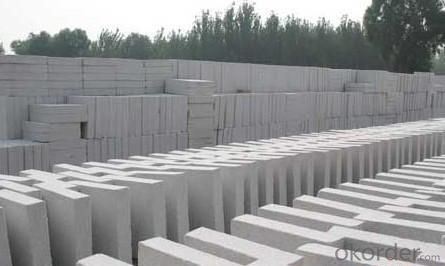
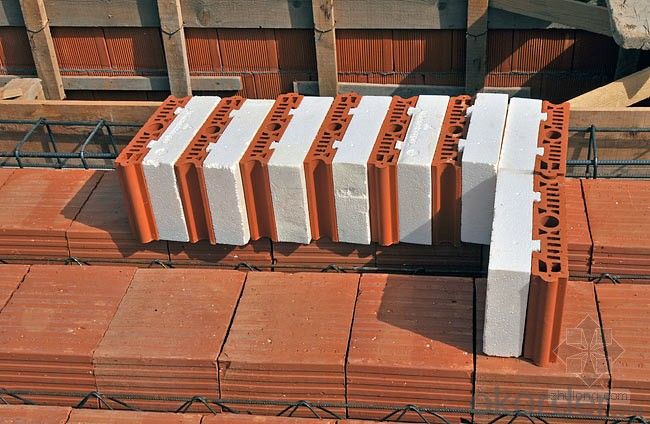
- Q: Can insulating fire bricks be used as a lining for boilers?
- Yes, insulating fire bricks can be used as a lining for boilers. They have excellent thermal insulation properties, high heat resistance, and can withstand the extreme conditions within a boiler. Insulating fire bricks help in minimizing heat loss, improving energy efficiency, and maintaining consistent temperatures within the boiler.
- Q: Are insulating fire bricks resistant to fluorine gas?
- Typically, insulating fire bricks do not possess resistance against fluorine gas. Known for its high reactivity and corrosiveness, fluorine gas has the capability to react with diverse substances, including insulating fire bricks. The corrosive properties of fluorine gas may result in structural and integrity harm to the fire bricks, eventually leading to their degradation or malfunction. Hence, it is recommended to opt for an alternative refractory material that is specifically engineered to endure the corrosive impact of fluorine gas, in case it is needed for a specific application.
- Q: How do insulating fire bricks compare to other types of refractory materials?
- IFBs, or insulating fire bricks, are refractory materials specially designed for their high insulating properties. They have several advantages when compared to standard fire bricks or castable refractories. First and foremost, IFBs have lower thermal conductivity than other refractory materials. This means they are more effective at preventing heat loss and providing insulation for high-temperature applications. Their low thermal conductivity allows them to retain heat within furnaces or kilns, resulting in reduced energy consumption and improved efficiency. Additionally, IFBs are lightweight, making them easier to handle, transport, and install. Their lightweight nature also reduces the overall weight of the refractory lining, which can be advantageous in certain situations. Another benefit of IFBs is their ability to withstand rapid temperature changes. They exhibit good thermal shock resistance, meaning they can endure sudden temperature fluctuations without cracking or spalling. This property is particularly valuable in applications with frequent heating and cooling cycles. Furthermore, IFBs possess a high level of chemical resistance. They can withstand corrosive environments and chemical attacks, making them suitable for various applications involving acids, alkalis, and other aggressive substances. However, IFBs do have limitations. Their lower density compared to standard fire bricks means they are less durable and have lower mechanical strength. Therefore, they might not be suitable for applications that require high load-bearing capacity or are prone to heavy abrasion. To summarize, IFBs offer excellent thermal insulation, lightweight properties, good thermal shock resistance, and high chemical resistance. Nonetheless, their lower density and reduced mechanical strength may restrict their usage in certain scenarios. It is crucial to carefully consider the specific requirements of the application before selecting IFBs or alternative refractory materials.
- Q: Can insulating fire bricks be used as a lining for incinerators?
- Indeed, insulating fire bricks have the capability to serve as a lining in incinerators. Their design is specifically engineered to endure extreme temperatures while offering exceptional thermal insulation. Comprised of lightweight components like ceramic fibers, refractory minerals, and binders, these bricks have the ability to retain heat and hinder heat transfer to the external surface. When it comes to incinerators, where elevated temperatures are generated to effectively incinerate waste materials, insulating fire bricks play a crucial role in sustaining the desired internal temperature of the unit. They can be utilized to cover the walls, floor, and ceiling of the incinerator, effectively confining the heat within the chamber and preventing its escape into the surrounding environment. Additionally, the insulation properties of these bricks contribute to energy efficiency by minimizing heat loss. Consequently, this can lead to reduced fuel consumption and operational expenses. Nevertheless, it is essential to acknowledge that insulating fire bricks might not be suitable for all types of incinerators. Depending on the specific requirements and circumstances of the incinerator, alternative refractory materials like dense fire bricks or castable refractories may be more suitable. It is strongly advised to consult with experts or manufacturers to determine the most appropriate lining material for a particular incinerator.
- Q: Can insulating fire bricks be used in the construction of pottery extruders?
- Yes, insulating fire bricks can be used in the construction of pottery extruders. Insulating fire bricks are known for their high heat resistance and insulation properties, making them ideal for applications involving high temperatures, such as pottery kilns and extruders. These bricks can withstand the intense heat generated during the pottery extrusion process, ensuring the longevity and durability of the extruder. Additionally, their insulation properties help to maintain a consistent temperature within the extruder, which is crucial for achieving precise and consistent results in pottery production. Therefore, using insulating fire bricks in the construction of pottery extruders is a reliable and effective choice.
- Q: Can insulating fire bricks be used for insulation in hot blast stoves?
- Insulating fire bricks are suitable for insulation in hot blast stoves due to their ability to withstand high temperatures and provide excellent thermal insulation. These bricks are constructed using lightweight materials with low thermal conductivity, enabling them to effectively retain heat and prevent heat transfer to the surrounding environment. By incorporating insulating fire bricks in hot blast stoves, the internal temperatures can be preserved at high levels while minimizing heat loss. As a result, the stove's energy efficiency is enhanced, and the structure is safeguarded from excessive heat. Consequently, the practice of using insulating fire bricks for insulation in hot blast stoves is widely adopted and proven to be effective.
- Q: Can insulating fire bricks be used in the construction of metal smelting molds?
- Yes, insulating fire bricks can be used in the construction of metal smelting molds. Insulating fire bricks are designed to withstand high temperatures and provide excellent thermal insulation, making them suitable for use in metal smelting molds where heat retention is crucial.
- Q: How do insulating fire bricks help reduce emissions from heating equipment?
- The role played by insulating fire bricks in reducing emissions from heating equipment is significant. This is because they improve the system's overall energy efficiency. These bricks are specifically designed with low thermal conductivity, which allows them to insulate heat effectively and prevent heat loss. When incorporated into heating equipment like furnaces or boilers, insulating fire bricks help retain heat within the system. This enables the equipment to reach and maintain higher temperatures more efficiently. As a result, fuel consumption is reduced since less energy is needed to achieve the desired heating levels. By decreasing fuel consumption, insulating fire bricks indirectly contribute to emission reduction. Burning less fuel to generate the same amount of heat leads to a corresponding decrease in the release of greenhouse gases and other pollutants into the atmosphere. This contribution is particularly important in the context of fossil fuel-based heating systems, which are major sources of carbon dioxide emissions and air pollution. Additionally, the use of insulating fire bricks can improve combustion efficiency. The higher temperatures attained and sustained within the heating equipment enhance the combustion process, ensuring a more thorough and cleaner burn. This helps minimize the production of harmful by-products like carbon monoxide and nitrogen oxides, which not only harm the environment but also pose health risks to humans. In conclusion, insulating fire bricks play a crucial role in reducing emissions from heating equipment by enhancing energy efficiency, reducing fuel consumption, and promoting cleaner combustion. By enhancing the overall performance of heating systems, these bricks contribute to a more sustainable and environmentally friendly approach to heating.
- Q: Are insulating fire bricks resistant to ultraviolet radiation?
- No, insulating fire bricks are not resistant to ultraviolet radiation.
- Q: Outside brick wall, inside brick wall how to return a responsibility?
- Use in indoor environment using brick, not so bad, are generally Youmianzhuan, of course there are all the tiles, bricks, colorful patterns, the appearance of small size error.
Send your message to us
Insulating Fire Brick - Refractory GJM Mullite Insulation Brick GJM-30
- Loading Port:
- Shanghai
- Payment Terms:
- TT OR LC
- Min Order Qty:
- 10 m.t.
- Supply Capability:
- 1000 m.t./month
OKorder Service Pledge
OKorder Financial Service
Similar products
Hot products
Hot Searches
Related keywords
